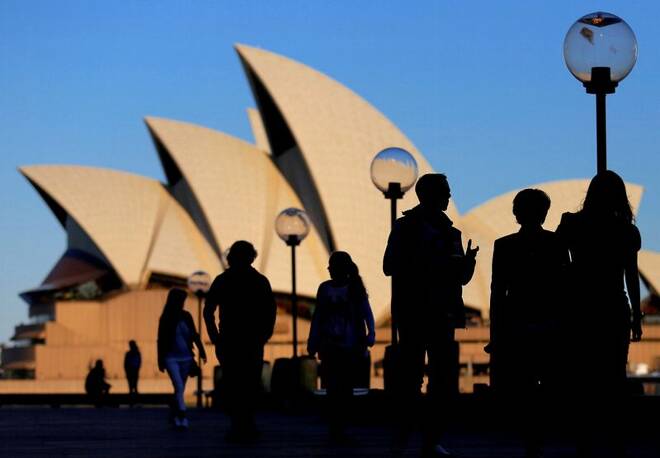Advertisement
Advertisement
Australian unemployment holds at 4% in March, labour market still hot
By:
SYDNEY (Reuters) - Australia's unemployment rate held at a 13-year low in March as jobs rose by less than forecast following months of strong gains, though record-high vacancies suggest it is only a matter of time before unemployment falls further.
By Wayne Cole
SYDNEY (Reuters) -Australia’s unemployment rate held at a 13-year low in March as jobs growth slowed after months of strong gains, though record-high vacancies suggest it is only a matter of time before unemployment falls further.
Figures from the Australian Bureau of Statistics on Thursday showed a jobless rate of 4.0%, when analysts had looked for a drop to 3.9% and the lowest reading since 1974.
That will be a disappointment to Prime Minister Scott Morrison who was hoping a sub-4 number would bolster his economic credentials amid a close election campaign.
It might also ease pressure on the Reserve Bank of Australia (RBA) to lift interest rates next month, though markets are still wagering the first hike in a decade will come in June.
There is no doubt the labour market remains very tight with employment rising by another 17,900 in March, and a stellar 338,000 in the past 12 months.
Underemployment hit the lowest since 2008 and participation rates held near record highs at 66.4%. Demand for labour is also red hot with vacancies at an all-time peak of 423,500, 86% higher than their pre-pandemic levels.
The RBA has already dropped a pledge to be patient on policy amid signs the tightening labour market was finally pushing wages higher, and adding to inflationary pressure.
More businesses are planning to pass on rising input and labour costs to customers, a major change from recent years when fierce competition kept prices restrained.
The consumer price index – due out on April 27 – is expected to surge well above 4%, while core inflation should top the RBA’s 2-3% target band for the first time in a decade.
All of which has led financial markets to fully price in a rate hike to 0.25% in June, and some risk the RBA could go all the way to 0.50% in one go.
Central banks in New Zealand and Canada both hiked by half a point this week and the U.S. Federal Reserve is considered almost certain to do the same in May.
“The increasing ability of firms to pass on higher costs is something the RBA has been looking out for,” said Nomura economist Andrew Ticehurst.
“So the task of withdrawing accommodation appears more urgent than ever,” he added. “The risk appears to be for more rate hikes, rather than less.”
He is tipping rises in June, July, August, November and December.
(Reporting by Wayne Cole; Editing by Himani Sarkar & Shri Navaratnam)
About the Author
Reuterscontributor
Reuters, the news and media division of Thomson Reuters, is the world’s largest international multimedia news provider reaching more than one billion people every day. Reuters provides trusted business, financial, national, and international news to professionals via Thomson Reuters desktops, the world's media organizations, and directly to consumers at Reuters.com and via Reuters TV. Learn more about Thomson Reuters products:
Did you find this article useful?
Latest news and analysis
Advertisement
